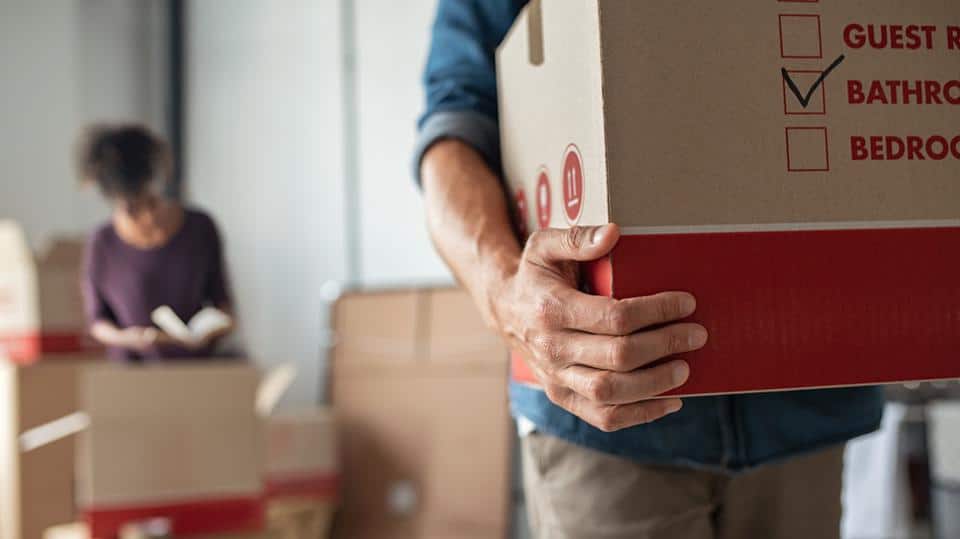When To Start Packing To Move
The prospect of moving to a new place is an exciting one, signaling the start of a fresh chapter. However, it also comes with the task of packing up your entire life and belongings. The question that often arises is: When should you begin this process? The answer isn’t a one-size-fits-all solution, as the timeline for when to start packing for a move can vary based on individual preferences, the size of your household, and the distance of your move.
Starting the packing process early offers numerous benefits. It allows you to stay organized, reduce stress, and tackle the task at a manageable pace. A recommended timeline is typically around 4 to 6 weeks before your moving date. This gives you ample time to sort through your possessions, declutter, and acquire the necessary packing materials like boxes, tape, and bubble wrap.
For more extensive households or long-distance moves, you might want to extend this timeline to ensure a smooth transition. Remember, the process of packing isn’t just about physically placing items into boxes; it’s an opportunity to assess what you truly need and create a fresh start in your new space.
This article delves into the factors that influence when to start packing for a move, offering insights and tips to help you approach the process with confidence and efficiency. Whether you’re a meticulous planner or a more spontaneous organizer, finding the right timing for your move can make all the difference in ensuring a seamless transition.
How To Start Packing for a Move?
Moving to a new home is an exciting yet daunting endeavor. As you embark on this journey, a well-organized packing process can make all the difference. To start packing for a move, follow these practical steps that ensure a smooth transition to your new abode.
First and foremost, gather your essential packing supplies. Moving boxes, available in various sizes, are your best companions in this process. They provide structure and protection to your belongings. Additionally, don’t forget to stock up on packing paper – a versatile material that shields fragile items from damage.
Begin with one room at a time. This focused approach keeps you organized and reduces the overwhelming feeling of packing up your entire life. Carefully wrap breakables in packing paper before placing them snugly in moving boxes. Remember, layering the boxes with a protective cushion of packing paper ensures the safety of your valuables during transit.
Label each box with its contents and the room it belongs to. This small step can save you hours of searching for items in your new home. As you progress, consider decluttering by setting aside items you no longer need. Donating or selling these items not only reduces your load but also brings a positive start to your new chapter.
Starting the packing process early and following these steps will make moving day less stressful. With moving boxes securely filled and packing materials guarding your fragile items, you’re well on your way to a successful and organized move to your new home.
When To Start Packing for a Move (Day by Day Guide)
Embarking on the moving process can be a mix of excitement and anxiety. To alleviate stress and ensure a seamless transition, a well-structured packing timeline is crucial. Here’s a day-by-day guide on when to start packing for a move, ensuring you’re ready when the moving truck arrives.
Day 1-7: Preliminary Preparations Kick off the process by gathering your essential packing supplies: sturdy packing boxes, bubble wrap, packing paper, and tape. Sorting through your belongings early allows you to declutter and set aside items you no longer need.
Day 8-14: Strategic Packing Begin with items you rarely use – seasonal clothes, books, and decorative pieces. Label each box clearly with its contents and designated room. This step saves time and hassle during unpacking. As you pack, consider the fragility of your items and use packing paper and bubble wrap to cushion them.
Day 15-21: Gradual Progress Focus on packing non-essential items from your kitchen and living areas. Keep daily necessities accessible until the last day. A systematic approach eases the process and maintains functionality in your current home.
Day 22-28: The Final Push Pack the remaining essentials – clothes, toiletries, and personal items. Disassemble furniture and securely wrap its components. If using a moving truck, confirm the reservation and ensure it aligns with your packing timeline.
Day 29-30: Moving Day Eve Pack a “Moving Day” box with essentials like clothes, toiletries, and important documents. This box stays with you, ensuring a smooth transition while the moving truck transports the rest.
With this day-by-day guide, the packing process becomes a manageable and efficient endeavor. As you load those carefully packed boxes onto the moving truck, you’ll be ready to embrace your new adventure with confidence and ease.
Packing Tips When You’re Short on Time
When life throws you a time crunch during a move, efficient packing becomes your secret weapon. Whether you’re relocating for a new job or seizing an exciting opportunity, these packing tips will help you navigate the process smoothly even when you’re short on time.
1. Prioritize Essentials: Begin by packing the essentials first – daily-use items, important documents, and valuables. Out-of-season clothes and non-essential items can be tackled later.
2. Cut Down on Clutter: Assess how much stuff you truly need to take with you. Donate, sell, or discard items you no longer use. Streamlining your belongings streamlines the packing process.
3. Room-by-Room Approach: Focus on one room at a time. This targeted approach keeps the process organized and minimizes chaos.
4. Pack Like a Pro: Utilize your clean clothing as padding for fragile items. Two tasks accomplished in one step!
5. Double-duty Cleaning Supplies: Utilize your cleaning supplies wisely. Use dish towels or cleaning cloths as protective wrapping for delicate items. Efficient and eco-friendly!
6. Use Suitcases and Bags: Pack out-of-season clothes and miscellaneous items in suitcases and duffel bags. They’re easy to transport and can be unpacked later.
7. Label Strategically: Mark boxes with the room they belong to and a general idea of their contents. This way, you can prioritize unpacking based on urgency.
8. Get Help: Enlist friends, family, or professional movers to assist you. A helping hand can make a huge difference when time is of the essence.
9. Overnight Bag: Pack an overnight bag with essentials like clothes, toiletries, and important documents. This bag ensures you’re covered for the first day in your new space.
10. Stay Calm: While packing in a hurry, it’s easy to feel overwhelmed. Take breaks, stay hydrated, and remind yourself that you’re capable of tackling this challenge.
With these packing tips, you can efficiently manage your move even when time is in short supply. As you unpack in your new space, you’ll be amazed at how well-organized and stress-free the process turned out to be.
Create a 3-Step Packing Process Timeline
Crafting a 3-step packing process timeline is a smart strategy to ensure a smooth move to your new house. Whether you’re tackling the packing yourself or enlisting the help of a professional moving company, a well-structured plan can make the transition seamless and stress-free.
Step 1: Prepare and Gather Supplies Begin by collecting the right packing materials. Sturdy boxes, bubble wrap, packing paper, tape, and markers are essential. Estimate the quantity needed and acquire them well in advance. Professional moving companies often offer packing services and can provide the necessary materials.
Step 2: Room-by-Room Packing Divide the packing process into manageable sections by focusing on one room at a time. Start with areas you use less frequently. Carefully wrap fragile items in bubble wrap or packing paper, placing them securely in boxes. Label each box with its contents and the room it belongs to. This step not only simplifies unpacking but also assists the movers in placing boxes in the right rooms in your new home.
Step 3: The Final Push As moving day approaches, pack essential items you’ll need immediately upon arrival in a separate box. These may include clothes, toiletries, important documents, and a few basic kitchen supplies. If you’re using a professional moving company, communicate your timeline and any specific packing instructions to ensure a coordinated effort.
Creating a 3-step packing process timeline streamlines your move and reduces last-minute stress. Whether you’re packing on your own or with professional assistance, a well-organized approach ensures that your belongings arrive safely and you can settle comfortably into your new house.
Need a Hand With You To Move? Choose Us
When it comes to moving, staying organized and efficient is the key to a successful transition. If you’re seeking a reliable partner to help you with your move, look no further – choose Cross Country Car Shipping for a stress-free and seamless experience.
Our professional moving services are designed to cater to your unique needs, whether you’re relocating locally or embarking on a long-distance journey. We understand that the process can be overwhelming, which is why we’re here to lend you a hand every step of the way.
One of the challenges of moving is dealing with unwanted items. Our team can assist you in decluttering and deciding what to keep, donate, or discard. This saves you time and energy, allowing you to focus on settling into your new space without the unnecessary baggage.
For long-distance moves, our expertise ensures that your belongings are securely packed, transported, and delivered to your new destination. With our help, you can rest assured that your cherished possessions will arrive in pristine condition, no matter the distance. Check our instant quote here.
Choosing us means choosing a dedicated team committed to your satisfaction. We prioritize careful handling, meticulous organization, and timely execution, making your move as smooth as possible. Let us alleviate the stress of moving by offering you a helping hand – your trusted partner in the journey to your new home.
FAQs
How Early Should Someone Pack for a Move?
The ideal time to start packing for a move depends on various factors. Generally, it’s recommended to begin packing about 4 to 6 weeks before your moving date. Starting early allows you to stay organized, declutter, and pack at a manageable pace. For long-distance moves or larger households, consider extending this timeline. Starting early also ensures you have enough time to obtain the right packing materials and sort through your belongings. Ultimately, the goal is to avoid last-minute stress and make the transition as smooth as possible.
How Do You Start Packing To Move?
To kickstart your packing process, follow these steps. Begin by gathering essential packing supplies such as boxes, tape, bubble wrap, and trash bags. Start with items you don’t frequently use and place them in labeled boxes. As you progress, prioritize each room, carefully wrapping fragile items in bubble wrap. For a swift decluttering process, use trash bags to dispose of unwanted items. This systematic approach ensures a well-organized packing experience, making your move efficient and stress-free.







